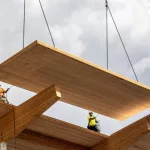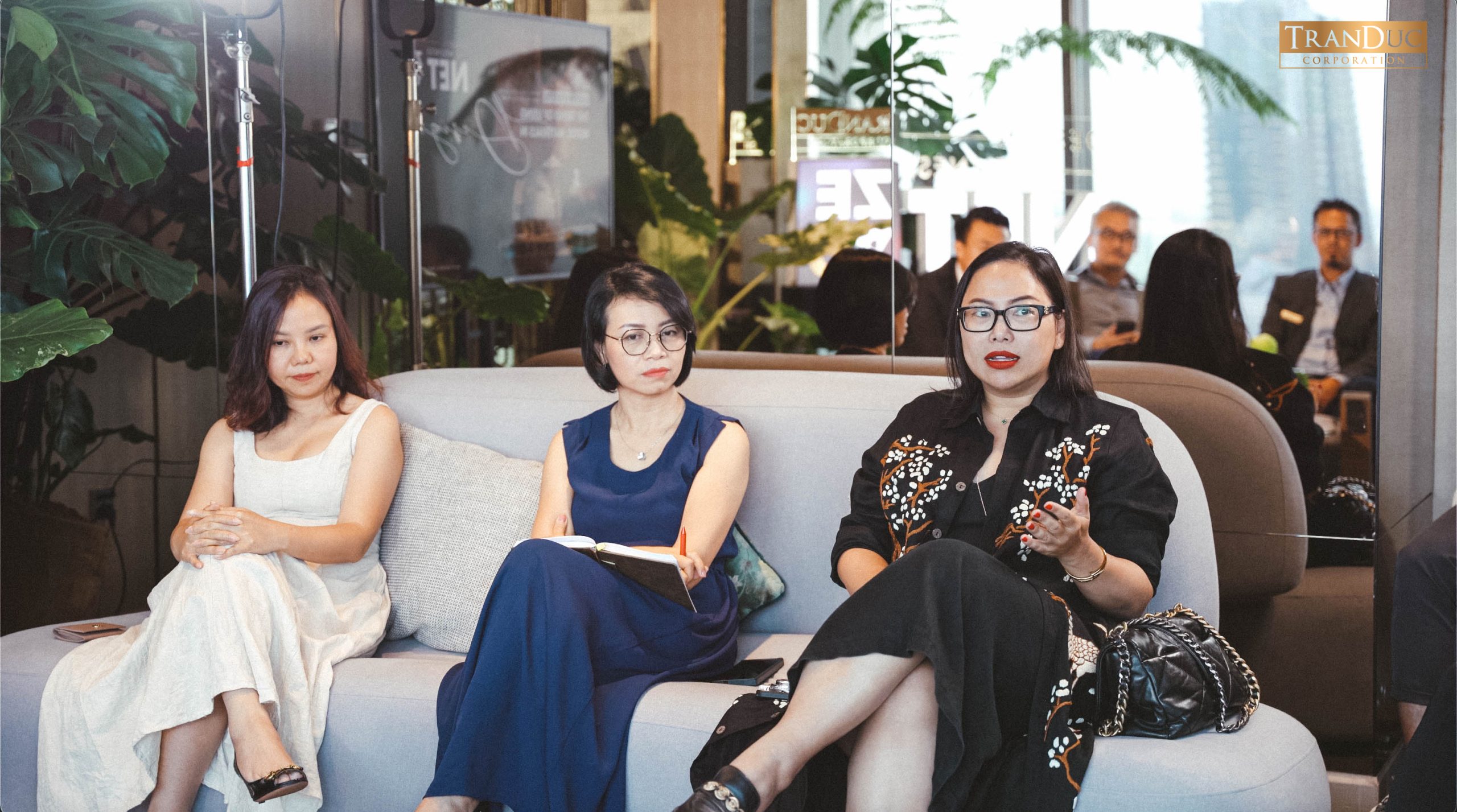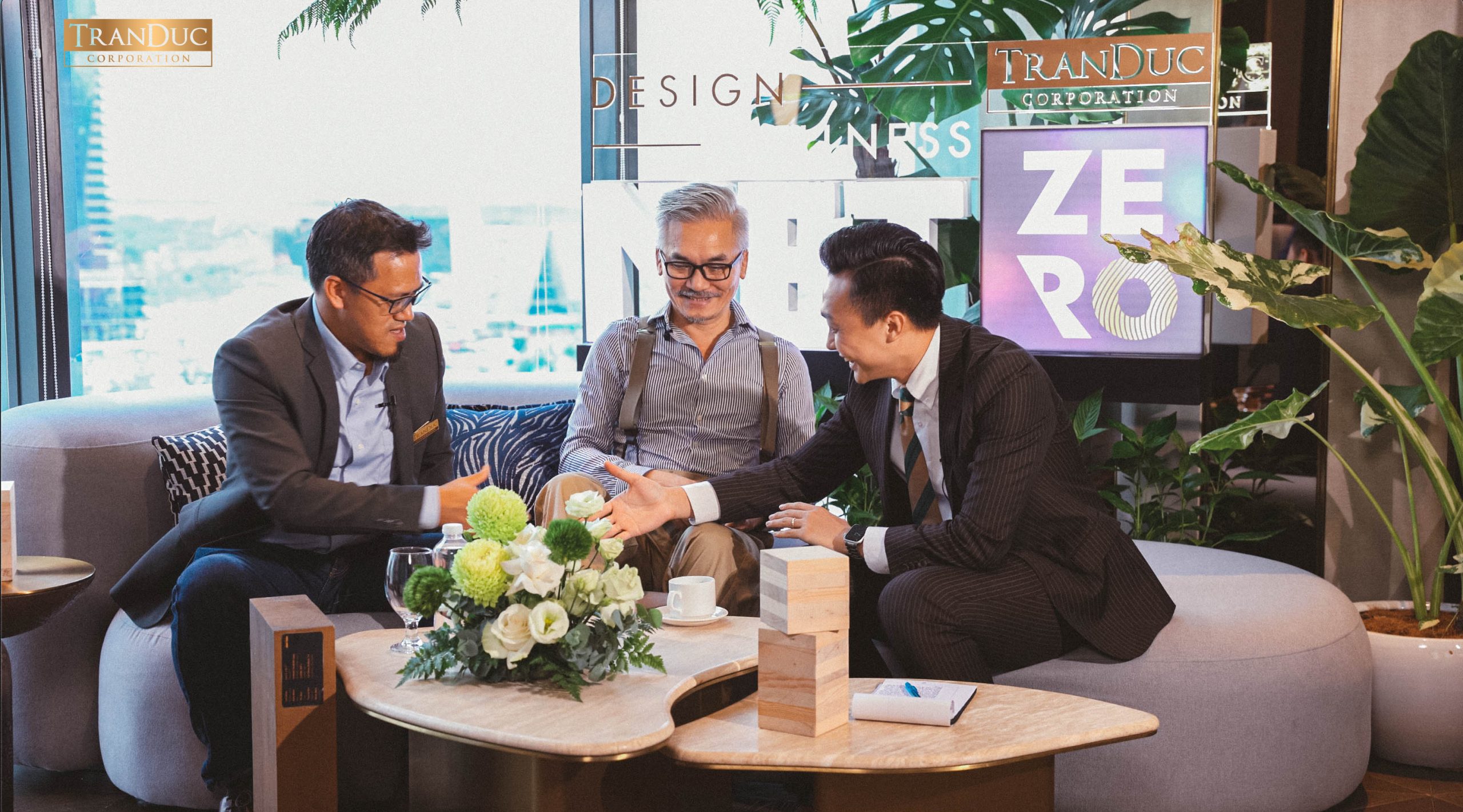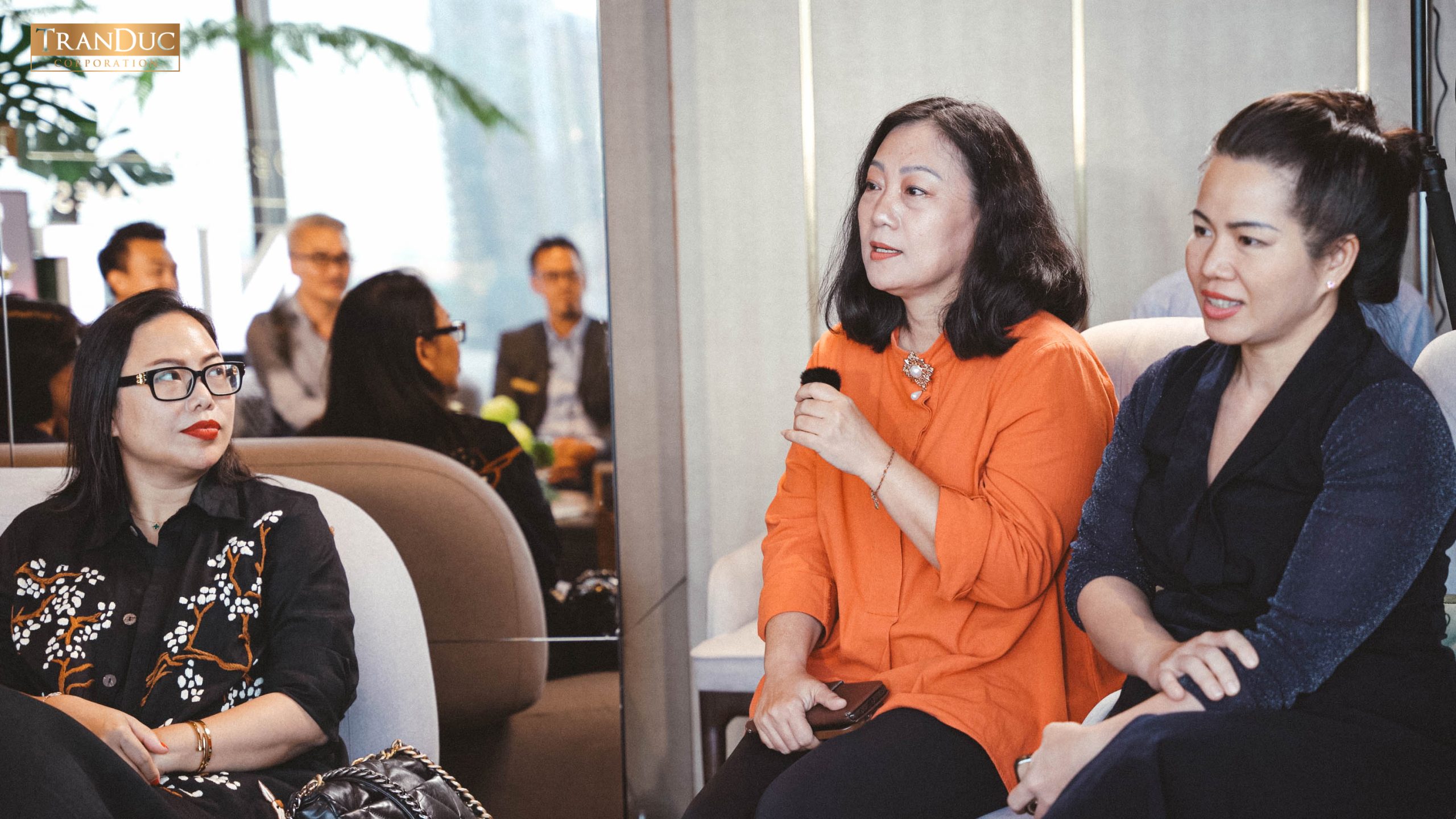

“Research into the application of wood materials in the architectural sector has been underway since 2005. This is not only recognized as a traditional material but is also being extensively studied for widespread use in contemporary architecture” emphasized Dr. Trương Thị Thanh Trúc, Architect, regarding the journey and value of wood materials in the Architecture and Construction industry.
Contributing to global emission balance or committing to actions for change towards Net Zero by 2050 is considered an urgent task for the Architecture and Construction industry in this phase. In that development journey, one of the immediately applicable solutions is the use of green materials with clear origins, capable of replacing traditional concrete while protecting the environment.
On August 9th, TranDuc Corporation organized the “Net Zero Roundtable” event with the theme “Architects and the Trend of Using Wood Materials in Design.” This is the first event in a series of projects aimed at connecting architects, investors, and related personnel in the Architecture and Construction industry to update the latest industry information, share professional experiences, and jointly work towards Net Zero by 2050.
 Event Overview
Event Overview
The “Net Zero Roundtable” is the first talk show series discussing Net Zero in Architecture & Construction, gathering many industry-related personnel such as project director architects, technical directors, and specialized press agencies. At the program, leading architects also provided information and data to demonstrate that innovation and creativity in the use of green materials are the key to sustainable development for the future of the Construction industry.
When discussing sustainability in projects, especially landscape projects, architect (KTS) Phạm Thị Ái Thủy (Founder TA Landscape architecture, Architect of the “Golden Bridge” project – Bà Nà Hills) shared: “Almost all countries today use wood structures, especially historical sites or scenic spots, due to its adaptability and environmental friendliness, showing that deep down, everyone loves nature, and wood is the proof.”
 Ms. Võ Nhật Liễu – Business Director cum Project Development Director – CEO Navi’S (left), Assoc. Prof. Dr. Architect. Nguyên Hạnh Nguyên (center), and Architect. Phạm Thị Ái Thủy (right)
Ms. Võ Nhật Liễu – Business Director cum Project Development Director – CEO Navi’S (left), Assoc. Prof. Dr. Architect. Nguyên Hạnh Nguyên (center), and Architect. Phạm Thị Ái Thủy (right)First developed in Austria in the early 1990s, Cross-Laminated Timber (CLT) quickly became one of the leading sustainable building solutions, thanks to its ability to improve project efficiency while minimizing environmental impact. CLT has been successfully applied in many prominent projects worldwide. A typical example is Brock Commons Tallwood House in Canada, an 18-story building constructed entirely from wood, which became one of the tallest buildings in the world using CLT. Seeing the development opportunities from this wood structure, Architect Bùi Hoàng Bảo (Co-Founder Mia Design Studio) also shared: “The application of CLT wood processing technology in the industry brings many sustainable development opportunities, creating construction efficiency & aesthetics in architecture. However, to fully utilize these opportunities, the construction industry needs to face and overcome challenges related to costs, regulations, skill training, investment in technology research and development, and cooperation among stakeholders, which will be the key to CLT development in the future.”
 Architect. Nguyễn Huy Hiển, Technical Director of TranDuc Corporation (left), Architect. Bùi Hoàng Bảo, Co-Founder of MIA Design Studio (center), and MC Phan Tô Ny (right)
Architect. Nguyễn Huy Hiển, Technical Director of TranDuc Corporation (left), Architect. Bùi Hoàng Bảo, Co-Founder of MIA Design Studio (center), and MC Phan Tô Ny (right)In her role as a project developer, Ms. Võ Nhật Liễu – Business Director & Project Development Director of City Land, CEO Navi’S (Consulting company for the operation of high-end hotels and resorts in the Vietnamese market) shared: “International operators recommend the use of wood structure materials, which not only helps save energy but also reduces costs during operation and maintenance. Not only in Vietnam but also in Southeast Asia, 5-star resorts are currently aiming to use wood, and the solution of using wood structure materials will certainly be a trend and soon become popular in the Vietnamese market.”
“In design competitions for earthquake-resistant buildings organized by the British Council in collaboration with APEC for Green Build categories, 100% of the materials provided by the Organizing Committee to the contestants were wood materials, wood structures. From this information, it proves that besides the advantages related to load-bearing capacity and time-saving, wood materials also have the ability to withstand earthquakes,” shared Dr. Trương Thị Thanh Trúc, Architect.
With the sharing of leading experts, the role and importance of wood materials and wood structures in today’s Architecture and Construction have once again been affirmed.
 Tiến sĩ. Kiến trúc sư. Trương Thị Thanh Trúc đang phát biểu tại sự kiện.
Tiến sĩ. Kiến trúc sư. Trương Thị Thanh Trúc đang phát biểu tại sự kiện.
With 23 years of experience in the Architecture and Construction sector, especially in providing sustainable building materials and interior and exterior furniture for high-end resorts and hotels, TranDuc Corporation not only affirms its pioneering position but also demonstrates a strong commitment to sustainable development goals. Over the past 10 years, TranDuc has applied Glulam wood structure solutions to projects. In December 2023, TranDuc also imported and put into production a CLT line (CLT structure solution) – known as the “Green concrete” of the future, capable of replacing traditional concrete in terms of load-bearing capacity, saving time and construction costs, and minimizing resource consumption impacts, contributing to building a sustainable environment. “Net Zero is a long-term story and cannot be achieved by just one unit or enterprise. We, as a supplier, want to not only provide quality solutions but also contribute our small part to this journey of environmental protection. We hope to accompany architects, investors, and even students in sharing useful information about wood materials to jointly develop the Vietnamese Architecture industry,” shared Architect Nguyễn Huy Hiển – Technical Director of TranDuc Corporation.”
With over 20 years of experience, TranDuc Homes proudly stands as the leading provider of comprehensive solutions for the Architecture and Construction sectors in Southeast Asia. TranDuc Homes is aiming for a future where our solutions not only lead in quality but also pioneer the development of green construction, sustainable living, and environmental protection.
HCM Office:
Unit 901, The Waterfront Saigon, 1-1A-2 Ton Duc Thang, Sai Gon Ward, Ho Chi Minh City, Vietnam.
Factory:
69/13 Binh Chuan 42 Street, Binh Phuoc A Quarter, An Phu Ward, Ho Chi Minh City, Vietnam.
E-Mail: [email protected]
Phone: 0988 897 997